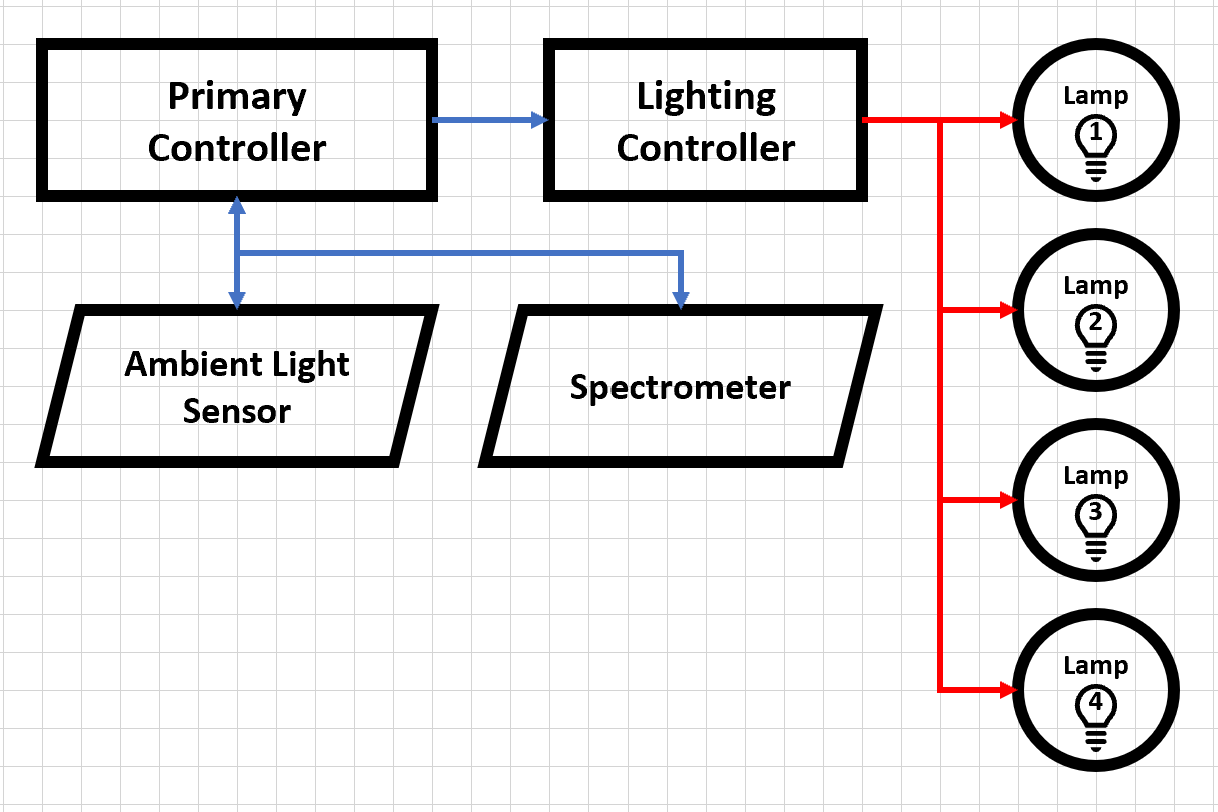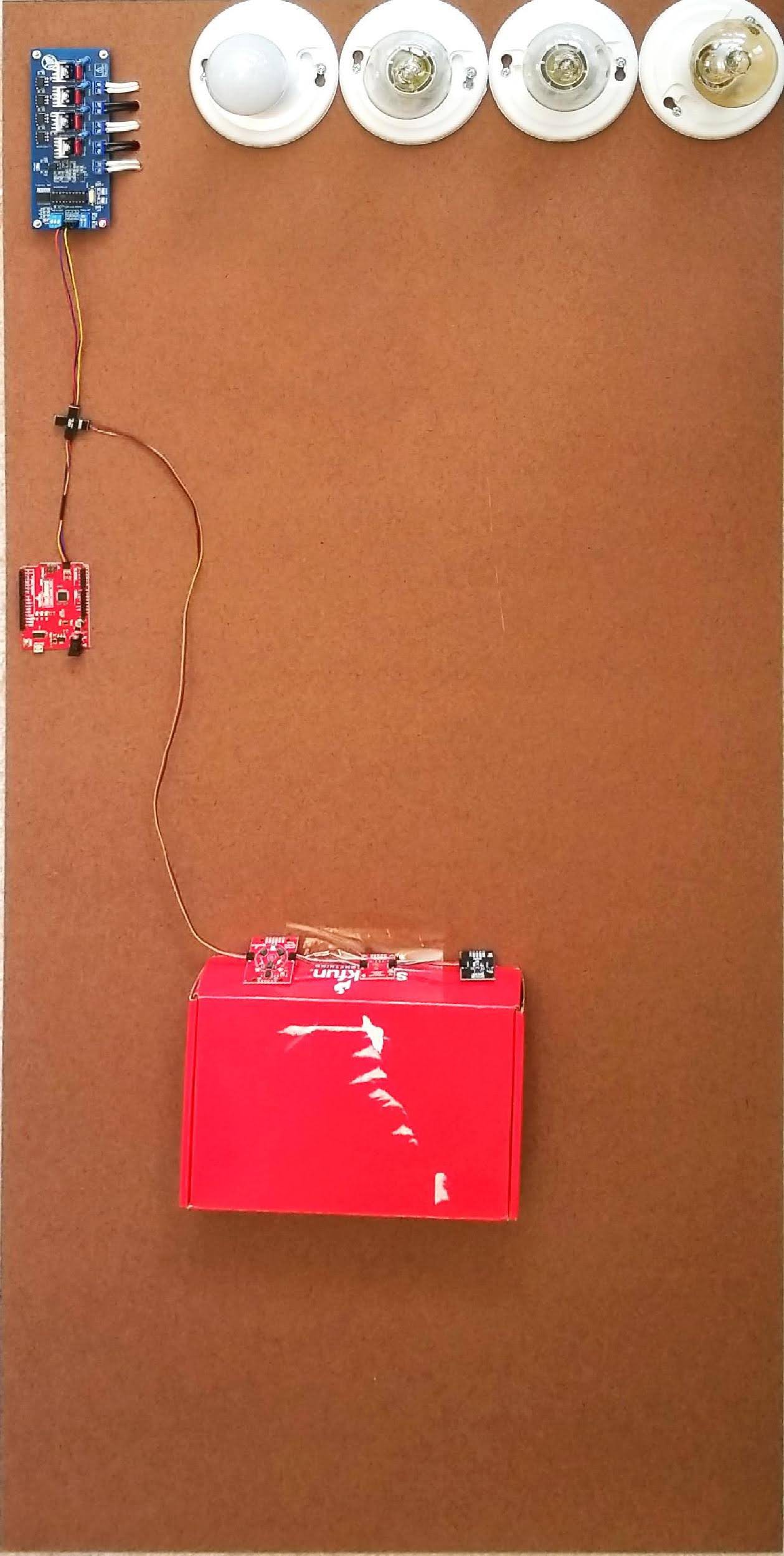As our testing progresses we've been exceptionally fortunate in our ability to get all of the components working and operational in a timely fashion. What may be missing for some, however, is a view of our solution which appears like anything that would be labeled a light fixture rather than science fair. This entry will review the original design concept, current prototype, and discuss the possible applications and options we have considered to date.
Let's begin with a review of the original project schematic. As demonstrated below the schematic began with a primary controller. This controller would be responsible for managing the communication path between the sensors responsible for measuring light levels and color components. Integrating these results into actionable output commands would also be directed from the primary controller to a dedicated lighting controller. The lighting controller's primary function is to interpret lighting commands into AC power line changes to the associated dimmable LED lamps (up to four).
 |
| Original project schematic documenting the primary controller in communication with multiple sensors as well as a dedicated lighting controller controlling up to four (4) lamps using traditional AC power controls (in red). |
Implementing this design as a prototype has proven straightforward. As documented below the current prototype board retained a standalone lighting controller with connectivity to four lamps. The primary controller is currently deployed as a standard arduino board. Given the availability of numerous I2C-based sensors we've actually experimented with more sensors than simply the spectrometer and ambient light sensor documented in the original schematic. Although the spectrometer has provided insight into the distinctions between each lamps color spectrum, we've also had good luck with taking color temperature measurements using an RGB sensor board.
 |
| The current prototype system with lamps, lighting circuit controller, arduino controller, and three (3) sensors for lighting spectrum analysis, lux readings, and color temperature calculations using an RGB sensor. And yes, we did use a shipping box as an integral part of the prototype! |
What might be rightly questioned at this point is how this turns into a usable lighting fixture? The good news is that this part of the design is incredibly flexible. Realistically, the only component which would have to be incorporated into a lighting fixture would be the lighting controller element. These electronics could be housed within or adjacent to most any existing 2- to 4- light fixture to provide the necessary local modulation of AC power. The primary controller and sensor network could also be integral to the fixture, or it could be wired remotely or even done wirelessly. Part of our goal in designating a standalone lighting controllers was facilitating that kind of separation. The primary controller and sensors are incredibly simple elements which are much more complicated in prototype form than they would need to be if implemented on a single PCB as a remote device (and even in their current form they're still incredibly compact!).
In constructing our prototype we intended to remain abstract rather than choose a specific fixture design since we've imagined this concept having applications in multiple areas. From a simple overhead light, to a bathroom vanity, to an even larger fixture appropriate for commercial installations the fundamental concept was focused around color temperature control of commodity dimmable lamps. After putting in the hard work to construct their CalEarth building, I don't imagine anyone choosing the fixture design of our prototype as a centerpiece to their new home. However, I would like to imagine that whatever lighting fixtures are selected could incorporate some of the control elements we've evaluated.
 Jon
Jon
Discussions
Become a Hackaday.io Member
Create an account to leave a comment. Already have an account? Log In.